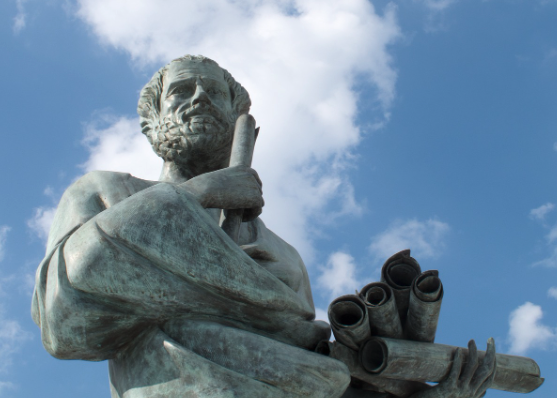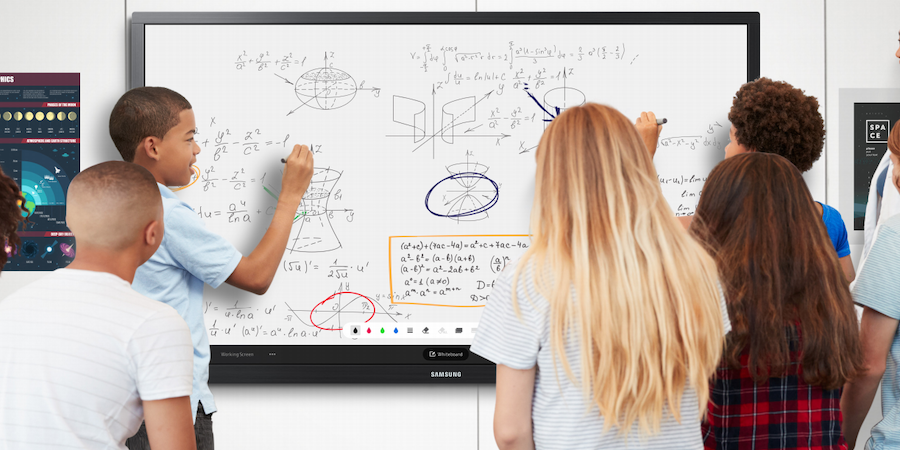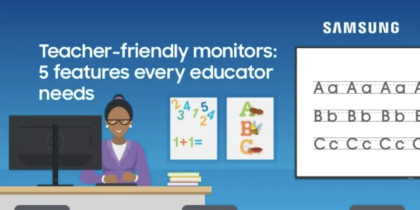Socrates was an ancient educator who lived in Athens from 470 to 399 BC. His pedagogy was and is so renowned that it easily makes its way into academic conversation today. He is the inspiration behind what we know as the Socratic method. It involves asking a series of questions to clarify someone’s beliefs and encourage them to excavate and think deeply about the issue being discussed. It can be argued that Socrates was one of the greatest teachers of all time. His ideas were so impactful and disruptive, that he was tried, sentenced and executed for them. He speaks to the idea that an honest and well-thought-out question is the key to a lifetime of quality learning. For his Socratic method, Socrates is a fixture in classrooms today, bolstering metacognition and critical thinking skills.
A Socratic Seminar is a teaching method that requires students to engage in a collaborative, reflective, and democratic discussion. It involves students asking and answering questions in an open-ended manner. The goal is to stimulate critical thinking, foster understanding, and have students actively participate in their learning. This, in turn, provides valuable insight for teachers about their students’ reasoning abilities and perspectives. Teachers can assess how students use what they know to make connections and how students engage in dialogue with their peers. Socratic Seminar can help to develop both academic and social-emotional skills.
As great as it sounds, Socratic Seminar never really worked out as well in my class. There were always issues to overcome. Issues that I now see would have been remedied with the use of technology to support student engagement and accountability.
Gadflies in the classroom
Socrates referred to himself as a gadfly, stinging and provoking the people of Athens out of their philosophical complacency. As a new eighth-grade reading teacher, I had to deal with my own set of gadflies when attempting to conduct a successful Socratic Seminar with my two classes pre-COVID. These were challenges or annoyances that always seemed to disrupt and derail Socratic Seminar for me.
Gadfly 1: Organizing student ideas
To start with, I struggled to ensure that students were well prepared. Assigning a text with corresponding questions did not feel like it did enough to support my students in pinning down their ideas. Even with graphic organizers, some of my eighth graders struggled to organize their thoughts in a way that made them feel confident during in-class discussions. I needed to find a way to help them develop meaningful connections between what they knew and the open-ended questions being asked.
Gadfly 2: Feedback
Students also needed a touchpoint. I knew as a teacher how important it was to get feedback from fellow teachers in order to grow my practice and build an effective learning environment. Feedback from peers was just as important to students. Having another set of eyes on your ideas and being able to hear a few suggestions causes you to clarify and refine your thoughts. This is a sure way to build confidence in your work and refine your thought process.
Gadfly 3: Supporting student voice and choice
In our first attempt at a successful Socratic Seminar, most of our discussion seemed to be dominated by a handful of students who usually excelled and were eager to share. This isolated students who also had valuable thoughts to share but may have felt a little less confident to do so. Some of my students were nervous about speaking publicly. They were fine with completing writing assignments associated with the task, but speaking ideas to their peers was not something they felt ready to do. Being that Socratic Seminar centers around discussion, the ways in which my students could contribute ideas were limited.
Gadfly 4: Retention
As a facilitator of discussion during the Socratic Seminar, I wanted to be excited for the few students who seemed to have no issue. I secretly thought that when my star students expressed their ideas, lightbulbs would start turning on all over the classroom and the whole activity would be salvaged. I quickly noticed that my star students could not turn the tide with their well-rehearsed arguments, and they did, in fact, run into issues. In the case of two star students locked in debate, neither was able to respond to the other’s argument while only really thinking of their own. They were having trouble visualizing the logic of their counterparts. They were not building on one another’s ideas because they were not easy to retain.
Make learning more fun with interactive technology
Learn why interactive learning matters and how prioritizing it engages students and improves outcomes. Download Now
Needless to say, my students were not enthusiastic about Socratic Seminar, and neither was I. What should have been an enlightening and engaging experience, full of hotly debated ideas and explosive moments of epiphany, felt like a forced activity to garner another grade in the grade book. And that was my gadfly experience. I imagined Socrates crestfallen, with his stone statue countenance becoming a victim to the gravity of the issue in my classroom. Socrates needed a facelift.
The technological facelift
The Socratic Seminars I’ve had the chance to conduct were all in the pre-COVID classroom. At the time, the printer was the most important tool for this activity. Today, however, each student is assigned some kind of computing device. Some classrooms are lucky enough to be outfitted with an interactive whiteboard for the modeling, display and annotation of all work. Teachers have the opportunity to construct a modernized version of the Socratic Seminar that would deal with the aforementioned gadflies and lift the imagined countenance of Socrates himself. For your consideration, I will pair each of our gadflies with a technological solution that will support student learning in a way the old method couldn’t address.
Gadfly 1: Organizing student ideas
When it comes to organizing ideas, Google Keep is an excellent way for students to record their ideas. For example, when having students debate the contradictory ideas and author’s bias in “To Kill a Mockingbird,” one group of students can deal with the book being all about empathy while the other group can deal with character development. The groups can share ideas inside of Google Keep, including notes, articles, video links and other resources. This way, both groups of students can brainstorm before ever having to present ideas and make meaningful connections that will prepare them for debate.
Gadfly 2: Feedback
Students have a built-in touch point for their side of the argument within Google Keep to help them build confidence. Students will also need feedback on how their arguments were perceived by the opposing side. This can be achieved by creating a Google Form where students can simply vote on prominent arguments and discuss what made them strong or weak.
Gadfly 3: Supporting student voice and choice
Noting that some students are not as eager to speak publicly as others, allowing students to record ideas with Flip (formerly Flipgrid) is a great way to support all students’ voices. An assignment where students get to record their preliminary arguments at home, building on the ideas collaborated on in Google Keep, can be a fun and meaningful component in building student confidence for the live discussion.
Gadfly 4: Retention
Finally, when it comes to retention of ideas, it can be difficult for students to keep in mind previously mentioned ideas as they try to offer logical rebuttals. One way to mitigate this is to have students make a few slides to go along with their arguments. These can be displayed on an interactive whiteboard during the Socratic discourse. Encourage students to use headings and bulleted lists. Allow students to get creative with video clips and pictures that further their strongest points. Students can use quotes from the classroom text with images that show how they feel about the logic of the quote as it pertains to the author’s bias. Lastly, have students share a copy of these slides with one another. This is a great way to help students retain shared ideas.
Applying the use of technology, such as Google Keep, Google Forms, Flip and Google Slides, when conducting a Socratic Seminar can align the experience with the goals it was meant to achieve. Students can collaborate in order to debate, thereby building their confidence and challenging their creativity as they grow their metacognition and critical thinking skills. Our technology can help the sharing of ideas feel much like the Athenian marketplace of Socrates’ day, providing students with deeper, more enriched moments of true learning. And we can all imagine the technological facelift, improving the countenance of our Socratic Seminar practice.
Our Samsung Education team is dedicated to helping your efforts as a curator for your classroom. Not only do we offer in-person PD, but we are always looking out for ways in which we can provide additional support throughout the school year. Check back each month as we offer more tools, ideas, and resources to help teachers on their journey to offer the best experience for their students.








